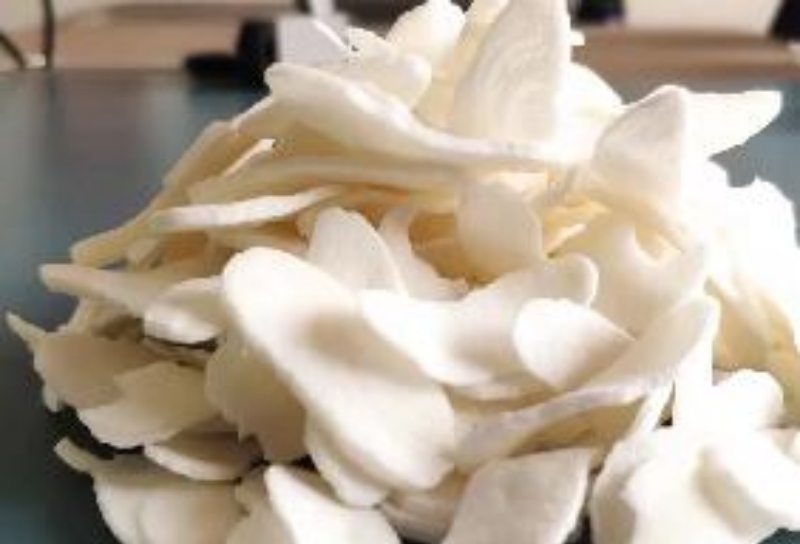Industry Information
Dec. 12, 2024
If you wish to purchase Chloroprene Rubber, please contact us for the latest Chloroprene Rubber price quotes.
Chloroprene Rubber, commonly known as CR, is a synthetic rubber that was first developed in the 1930s. It is a polymer of chloroprene, a chemical compound derived from acetylene and hydrochloric acid. Chloroprene Rubber is known for its excellent physical and chemical properties, making it a versatile material for various industrial and commercial applications.
Chloroprene Rubber exhibits a range of desirable properties, including:
High Tensile Strength: CR has a high tensile strength, which means it can withstand significant stretching without breaking.
Excellent Flexibility: It remains flexible over a wide temperature range, from -40°C to 120°C.
Resistance to Weathering: CR is highly resistant to ozone, UV light, and weathering, making it ideal for outdoor use.
Chemical Resistance: It is resistant to many chemicals, including oils, greases, and solvents.
Good Flame Resistance: CR has inherent flame-resistant properties, making it suitable for applications where fire safety is a concern.
Low Permeability to Gases: It has a low permeability to gases, which is beneficial in sealing applications.
Chloroprene Rubber is also known by several other names, including:
Neoprene (a trademarked name by DuPont)
Polychloroprene
Chlorobutadiene Rubber
CR Rubber
These terms are often used interchangeably in the industry, but it's important to note that Neoprene is a registered trademark and should be used with caution to avoid trademark infringement.
Chloroprene Rubber is widely used in various industries due to its unique properties. Some of the key applications include:
Seals and Gaskets: CR is used in the manufacturing of seals and gaskets for engines, transmissions, and other automotive components.
Hoses and Belts: It is used in the production of fuel hoses, power steering hoses, and drive belts, where its resistance to oil and heat is crucial.
Cable Insulation: CR is used to insulate electrical cables, providing protection against environmental factors and ensuring long-term performance.
Conveyor Belts: Its durability and resistance to wear make it an excellent choice for conveyor belts in mining, construction, and manufacturing.
Wetsuits: CR is a popular material for wetsuits due to its flexibility, thermal insulation, and resistance to water and UV light.
Boat Covers and Fenders: It is used in the production of boat covers, fenders, and other marine accessories, where its weather resistance is highly valued.
Roofing Membranes: CR is used in roofing membranes, providing a durable and weather-resistant solution for flat roofs.
Expansion Joints: It is used in expansion joints to accommodate movement and prevent damage in structures such as bridges and buildings.
Chloroprene Rubber and natural rubber each have their own set of advantages and disadvantages, and the choice between the two depends on the specific application requirements. Here are some key points of comparison:
Temperature Range: CR has a wider operating temperature range compared to natural rubber, making it more suitable for extreme conditions.
Chemical Resistance: CR is more resistant to oils, greases, and solvents than natural rubber, making it a better choice for applications involving these substances.
Weathering Resistance: CR is more resistant to ozone, UV light, and weathering, which makes it ideal for outdoor and exposed environments.
Tensile Strength: Both materials have good tensile strength, but CR generally offers better overall mechanical properties.
Cost: Natural rubber is often less expensive than CR, which can be a factor in cost-sensitive applications.
While Chloroprene Rubber excels in many areas, natural rubber may still be preferred in certain applications, particularly where cost and biodegradability are important considerations.
The terms Neoprene and Chloroprene Rubber are often used interchangeably, but there is a subtle difference:
Neoprene: This is a trademarked name for a type of Chloroprene Rubber originally developed by DuPont. While Neoprene is a brand name, it is commonly used to refer to the material in general.
Chloroprene Rubber (CR): This is the generic term for the synthetic rubber made from chloroprene. It encompasses all forms of this material, regardless of the manufacturer.
In practice, the terms are often used synonymously, but it is important to use Chloroprene Rubber or CR when referring to the material in a non-branded context to avoid any trademark issues.
Chloroprene Rubber is a versatile and high-performance synthetic rubber with a wide range of applications across various industries. Its unique combination of physical and chemical properties makes it a preferred choice in many demanding environments. Whether you are looking for a material that can withstand harsh chemicals, extreme temperatures, or provide reliable sealing and insulation, Chloroprene Rubber is a robust and reliable option.

As a reliable Chloroprene Rubber (CR) supplier, TJCY provides high-quality CR with excellent resistance to oils, chemicals, and weathering, ideal for use in automotive, construction, and industrial applications. TJCY's commitment to innovation and sustainability ensures customers receive top-tier products that meet global safety standards.
Tianjin Chengyi International Trading Co., Ltd.
8th floor 5th Building of North America N1 Cultural and Creative Area,No. 95 South Sports Road, Xiaodian District, Taiyuan, Shanxi, China.
+86 351 828 1248 /
Navigation
